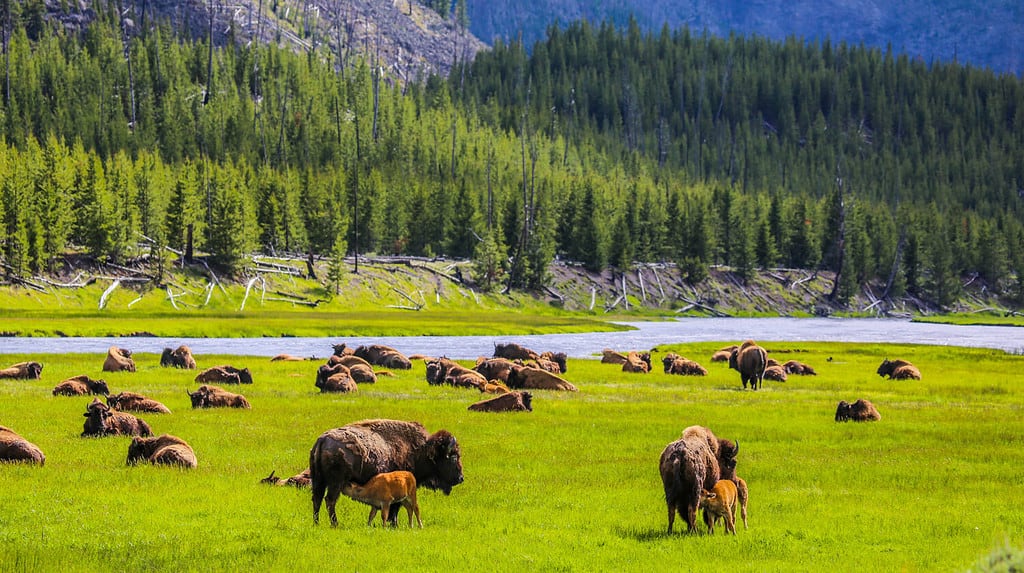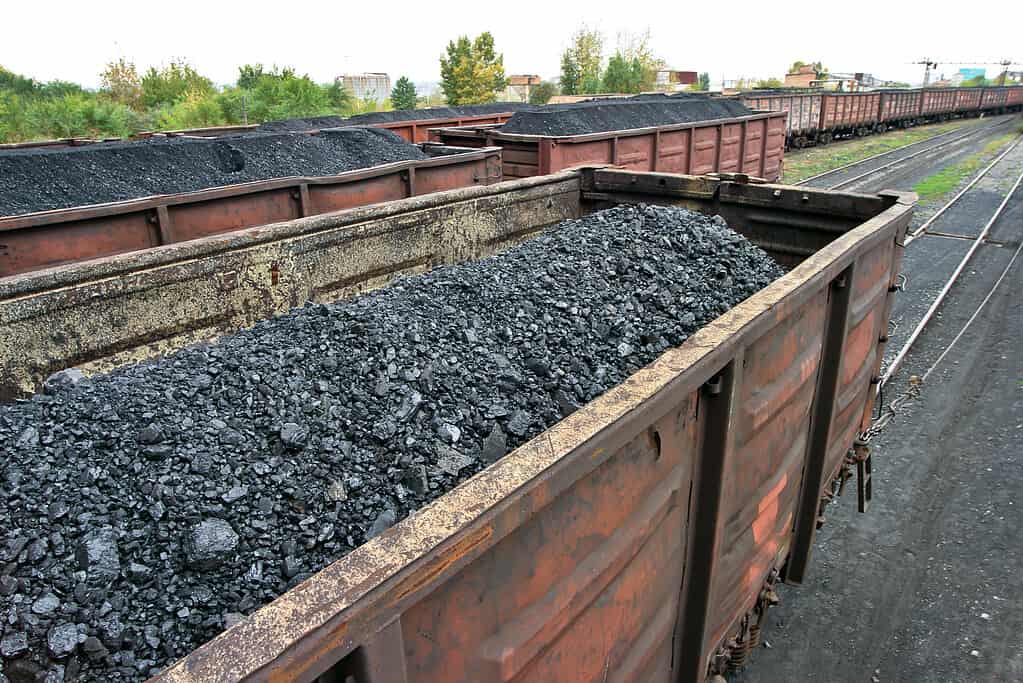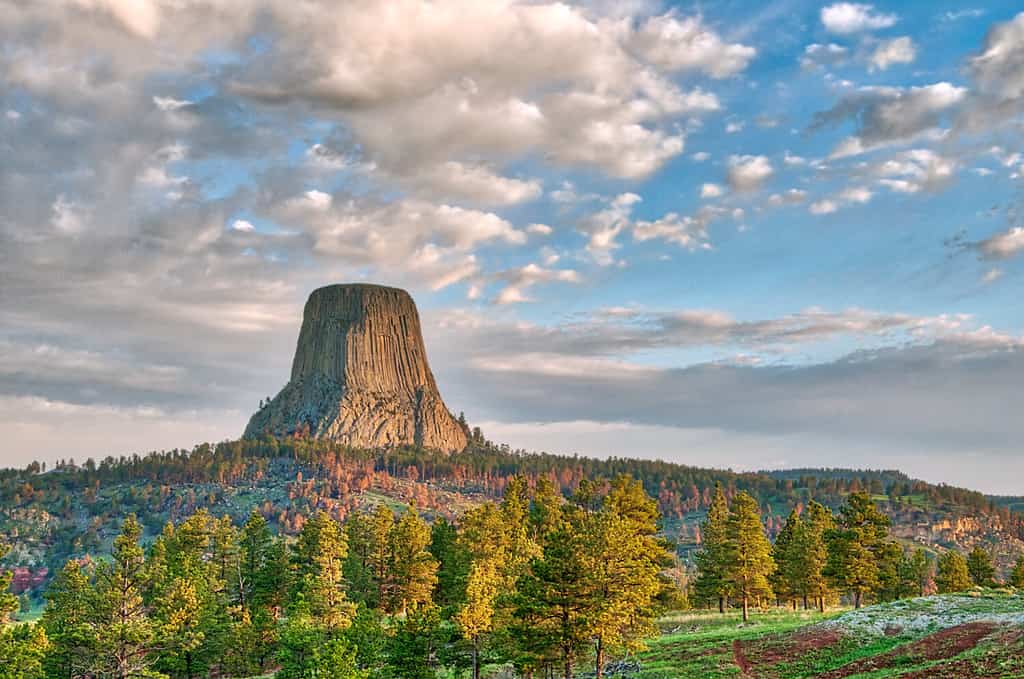As the 10th largest state in the United States, Wyoming comprises 97,093.14 square miles of sprawling landscape from the desert shrublands to the prairie grasslands. And even though it has so much land to offer, Wyoming is the least populated state in the country. So, it may not come as a surprise that the largest landowner in Wyoming is not an individual but the government. Here’s how much land the United States federal government owns in Wyoming.
The Largest Landowner in Wyoming
Considering the amount of public land, mineral estate, and historic trails, it makes sense that the United States federal government is the largest landowner in Wyoming. Of the available 63 million acres in the state, the federal government owns 29,100,000 acres in Wyoming. That means the federal government controls 46.7 percent of the land in the state. Of the land in Wyoming owned by the federal government, the Bureau of Land Management (BLM) oversees 61 percent of it.
Overall, the total land area of the United States is 2.27 billion acres, of which the federal government owns about 640 million acres or 28 percent. And, out of all the states, Wyoming ranks 6th for the amount of land federally controlled. So, it’s no surprise that the United States federal government is the largest landowner in Wyoming.
What Does the Federal Government Own in Wyoming?

Wyoming sees about 2.9 million tourists each year who visit federally owned, public land.
©KishoreJ/iStock via Getty Images
About 39 percent of government-owned land is public land (national forests, parks, wildlife refuges, etc.). Then, 61 percent is a federal mineral estate containing minerals, oil, and natural gas, which is managed by the Bureau of Land Management (BLM).
Federal Public Land

Wyoming’s Yellowstone National Park is a significant part of the state’s tourism industry.
©Gjeterhund Photography/Shutterstock.com
The second-largest industry in Wyoming is tourism, and in 2022, 7.5 million tourists visited Wyoming. That’s almost 13 times the size of Wyoming’s population. And approximately 2.9 million of those visitors explored federally-owned public land. With Yellowstone National Park, this doesn’t come as a shock, but hunters and fishermen also frequent other areas of public land. In fact, Wyoming is home to the largest pronghorn population in the world and the largest population of sage grouse in the United States, which draws many out-of-state hunters.
Also, some of the longest, intact National Historic Trails wind across Wyoming, including the Oregon, Mormon Pioneer, and Pony Express trails. The state has about 1,400 miles of National Historic Trails, and an estimated 18,013 annual visitors frequent the National Historic Trails Interpretive Center.
Federal Mineral Estate

Wyoming has been the nation’s leading coal producer since 1986.
©svet110/iStock via Getty Images
BLM Wyoming is the number one producer of several critical energy and mineral resources. Some important resources include:
- Coal: Wyoming supplies about 40 percent of the country’s coal.
- Uranium: As one of the top producers in the U.S., Wyoming has the largest uranium ore reserves.
- Trona: This compound is processed into soda ash, which is critical in manufacturing glass, textiles, and paper, to name a few. Wyoming has the largest deposit of trona in the world, which is estimated to last for 2,000 years.
- Bentonite: Over 70 percent of the world’s supply is in Wyoming. It is used for drilling mud and as a carrier for fertilizers and pesticides.
- Gas & Oil: The BLM Wyoming federal land is number one in federal gas production and number two in federal oil production.
Other Federal Agencies Managing Wyoming Land

Besides the Bureau of Land Management, the U.S. Forest Service and the U.S. National Park Service also oversee significant amounts of federally held land in Wyoming.
©Sulae/Shutterstock.com
While BLM Wyoming manages 61.15 percent of the acres owned by the largest landowner in Wyoming, there are other agencies as well. For instance:
- U.S. Forest Service (30.76 percent)
- U.S. National Park Service (7.8 percent)
- U.S. Fish and Wildlife Service (0.24 percent)
- U.S. Department of Defense (0.05 percent)
Other Top Landowners in Wyoming

In 2003, billionaire Stan Kroenke purchased 560,000 acres in Wyoming, making him the third-largest landowner in Wyoming.
Besides the federal government, there are nine other significant landowners in Wyoming. Here is who came in second and third place:
- Office of State Lands and Investments: In 1890, Wyoming became a state, and the federal government gave 4.2 million acres to the state. By law, the state land had to be held in a trust to generate income for public schools and other state institutions. This trust, known as the Office of State Lands and Investments, is the second-largest landowner in Wyoming, managing 4.2 million acres to this day.
- Stan Kroenke: The third-largest landowner in Wyoming and the largest private landowner in the state. This billionaire purchased 560,000 acres in 2003 and owns the biggest ranch in the Rocky Mountains. Kroenke also contributes significantly to habitat conservation in Wyoming.
The photo featured at the top of this post is © iStock.com/Oleksii Liskonih
Thank you for reading! Have some feedback for us? Contact the AZ Animals editorial team.







